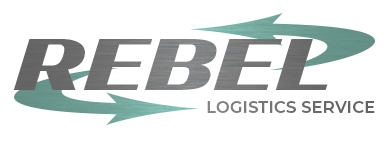3PL Pricing for Retailers
Many retailers rely on third-party logistics providers (3PLs) to manage their fulfillment needs. Understanding 3PL pricing structures is crucial for making informed decisions when choosing a logistics partner. Motor carriers, which are a key component of 3PL services, employ various methods to build pricing for their customers. These methods are influenced by factors such as industry standards, operational costs, market conditions, and customer requirements. Here are some common strategies used by motor carriers to determine pricing:

Cost-Plus Pricing:
This method is commonly used in 3PL pricing. It involves calculating the total cost of providing transportation services including expenses such as fuel, labor, maintenance, insurance, and overhead costs. The carrier then adds a markup or profit margin to cover its desired level of profitability. Cost-plus pricing ensures that all costs are covered while providing a reasonable profit margin.
>> To get a better understanding of how cost-per-mile factors into this method, check out this cost-per-mile calculator for trucking.
Rate Tariffs
Many motor carriers publish rate tariffs that outline the charges for different types of shipments and services. These tariffs are often based on factors such as distance, weight, freight class, and any additional services required (e.g., expedited delivery, specialized equipment). Customers can refer to these tariffs to understand the pricing structure and estimate their transportation costs.
Market-Based Pricing
Motor carriers may adjust their pricing based on prevailing market conditions, supply and demand dynamics, and competitive pressures. For example, during periods of high demand or capacity constraints, carriers may increase their rates to capitalize on market opportunities. Conversely, they may offer discounts or promotions to attract customers during slower periods or to gain market share.
Negotiated Rates
Carriers often negotiate rates directly with customers, especially for large-volume or long-term contracts. Negotiated rates take into account factors such as shipment volume, frequency, lane-specific requirements, and the overall value of the business relationship. These rates can be customized to meet the unique needs of each customer while ensuring profitability for the carrier.
Fuel Surcharges
Since fuel costs can fluctuate significantly due to changes in oil prices and other factors, carriers may apply fuel surcharges to their pricing. These surcharges are typically based on published indices or formulas that track fuel price movements. By passing on fuel cost increases (or decreases) to customers through surcharges, carriers can mitigate the financial impact of fuel price volatility.
Accessorial Charges
Motor carriers may levy additional charges, known as accessorial fees, for extra services or circumstances beyond standard transportation. Examples of accessorial charges include detention fees for delays at pickup or delivery locations, re-delivery fees, residential delivery surcharges, and fees for specialized equipment or handling requirements. These charges reflect the additional costs incurred by the carrier and help ensure fair compensation for such services.
Zone Pricing
In some cases, carriers may use zone-based pricing structures where rates vary depending on the geographic distance between origin and destination. Zones are defined based on proximity or distance bands, with rates increasing as shipments move farther away from the carrier’s base or hub locations. Zone pricing simplifies rate determination and reflects the varying costs associated with serving different regions.

In conclusion, by understanding 3PL pricing structures, retailers can make informed decisions when choosing a logistics partner. Motor carriers often employ a combination of these pricing methods. These methods optimize revenue, maintain competitiveness, and meet customer needs while ensuring profitability and sustainability. The specific approach used may vary depending on factors. These include the carrier’s size, specialization, market position, and the characteristics of its customer base.
At Rebel Logistics, we carefully assess potential customers to ensure a good fit for our “pricing that makes a difference” approach. We actively seek partnerships that deliver mutual benefits beyond just the bottom line. Lastly, respect is key. If our mutual efforts DO NOT align due to non-financial obstacles, we may not be a match.
Let’s talk, get together, see if your business and Rebel’s offerings can bring about a clear advantage for your 3PL needs. Reach out to one of our Rebel team members today!
